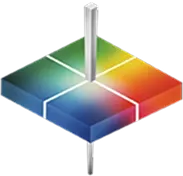
FAQ:”A client is asking me to measure something they call “Molten Color’. Do you have any information on this? Do Hunterlab instrument have a function for this color?”
“Molten Color” is not a defined color scale but refers to melting chemical crystalline or powder material such as Maleic or Phthalic Anhydride, into a liquid at an elevated temperature in the 140 – 250 C range.
Industrial Standard References for Molten Color Applications
APHA/Pt-Co Color measurement is a color quality attribute of BPA Bisphenol A, Cresylic Acids, Maleic and Phthalic Anhydride; Cresylic Acids and aromatic hydrocarbons prepared by heating to a liquid form.
- ASTM D1686 Test Method for Color of Solid Aromatic Hydrocarbons and Related Materials in the Molten State (Platinum-Cobalt Scale)
- ASTM D3366 Standard Test Method for Color of Maleic Anhydride and Phthalic Anhydride in the Molten State and After Heating (Platinum-Cobalt Scale)
- ASTM D3627 Standard Test Method for Color of Cresylic Acids (“C” Series Standards)
- ASTM D4789 Standard Test Method for Solution Color of Bisphenol A (4,4´-Isopropylidenediphenol)
ASTM – American Society of Testing and Materials, West Conshohocken, PA USA www.astm.org

